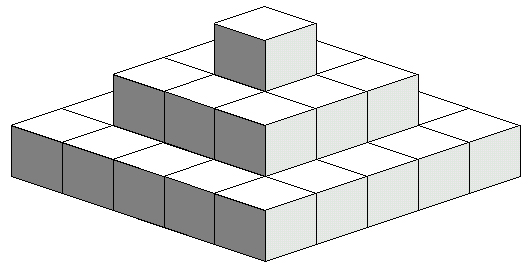Ziggurat formula
This task is about using equations to work out attributes of a ziggurat shape.

|
This shape is called a ziggurat and is three blocks high (n = 3). Each block is 1 metre high. Here is a rule for the number of blocks in a ziggurat that is n blocks high: |
|
|
bn = |
n is the height of the ziggurat. bn is the number of blocks in a ziggurat that is n blocks high. |
| a) |
How many blocks are there in a ziggurat that is |
|
|
i)
ii)
|
3 blocks high? __________
12 blocks high? __________
|
|
|
Each face on a block in the ziggurat has an area of 1 m2. This formula gives the total surface area for ziggurats of different heights: |
| an = 8n2 - 4n + 1 |
n is the height of the ziggurat. |
| b) |
What is the total surface area of a ziggurat that is |
|
|
i)
ii)
|
3 metres high? __________ m2
10 metres high? __________ m2
|
|

